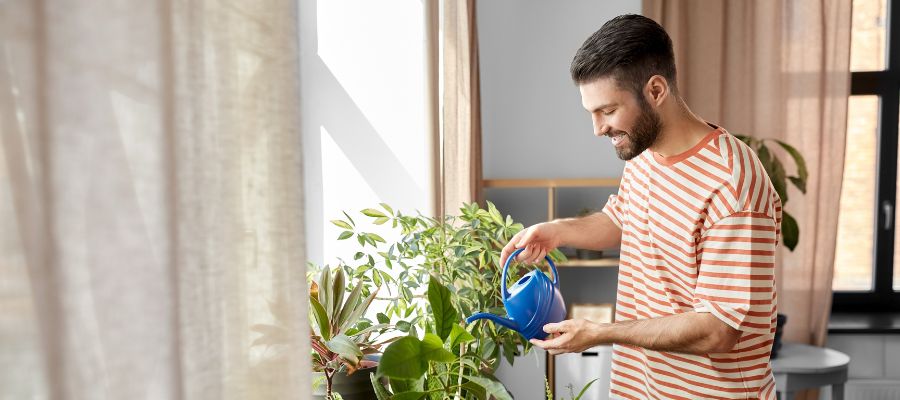Indoor plants can be a beautiful addition to any room in your home. They can add a touch of greenery and natural beauty to any space. However, caring for indoor plants can be tricky, so knowing the basics before you get started with your green friends will help.
These are four tips for caring for your indoor plants so they can stay healthy and happy.
Watering
One of the most critical aspects of caring for indoor plants is watering. Generally, you should water indoor plants once a week in the growing season and once every two weeks in the winter. However, we determine the watering frequency by the type and size of the plants. Overwatering and underwatering are both harmful to plants.
Plants’ roots need air to breathe, and overwatering makes soil waterlogged, which prevents air from getting to the roots. Similarly, the soil becomes too dry when you underwater plants, leading to wilted leaves. A useful tip is to stick your finger into the soil an inch deep. If it feels dry, it’s time to water your plants.
Lighting
Indoor plants have varied lighting needs. Some prefer bright light, while others do best in the shade or low light. Providing the correct amount of light is essential to your plants’ health, growth, and blossoming. Without enough light, your plants can become lanky and lose their foliage. Some plants that thrive in low light include spider plants, snake plants, and ZZ plants. Some that need bright, indirect light are fiddle leaf figs, pothos, or philodendrons. Ensure you place plants in the right spots in your home by understanding their lighting needs.
Fertilization
Fertilizers provide indoor plants with essential nutrients they cannot get naturally from the soil. The correct indoor plant fertilizer applied in the right amounts helps enhance the plants’ growth and blossoming process. Overfertilization can lead to salt buildup in the soil, resulting in root damage or death. You should perform proper fertilization of indoor plants twice a month in the growing season and once a month in the dormant season. Organic fertilizers and slow-release fertilizers are the most recommended types for indoor plants, as they release nutrients slowly and cause no harm to the plant.
Humidity
Humidity is essential for indoor plants, as it helps keep their leaves moist, reducing the chances of pests and diseases affecting them. You can humidify your indoor plants by placing a water tray nearby. If you notice the edges of the leaves are turning brown or the plants are dropping leaves, it may indicate that the humidity is too low.
Caring for your indoor plants is not rocket science, despite being a delicate process. Knowing the basics of watering, lighting, fertilization, and humidity can keep your indoor plants healthy and thriving. Each plant has its unique requirements, and keeping a watchful eye on them can help you provide the best care. These four tips allow you to nurture beautiful indoor plants and create a pleasant living environment.





















